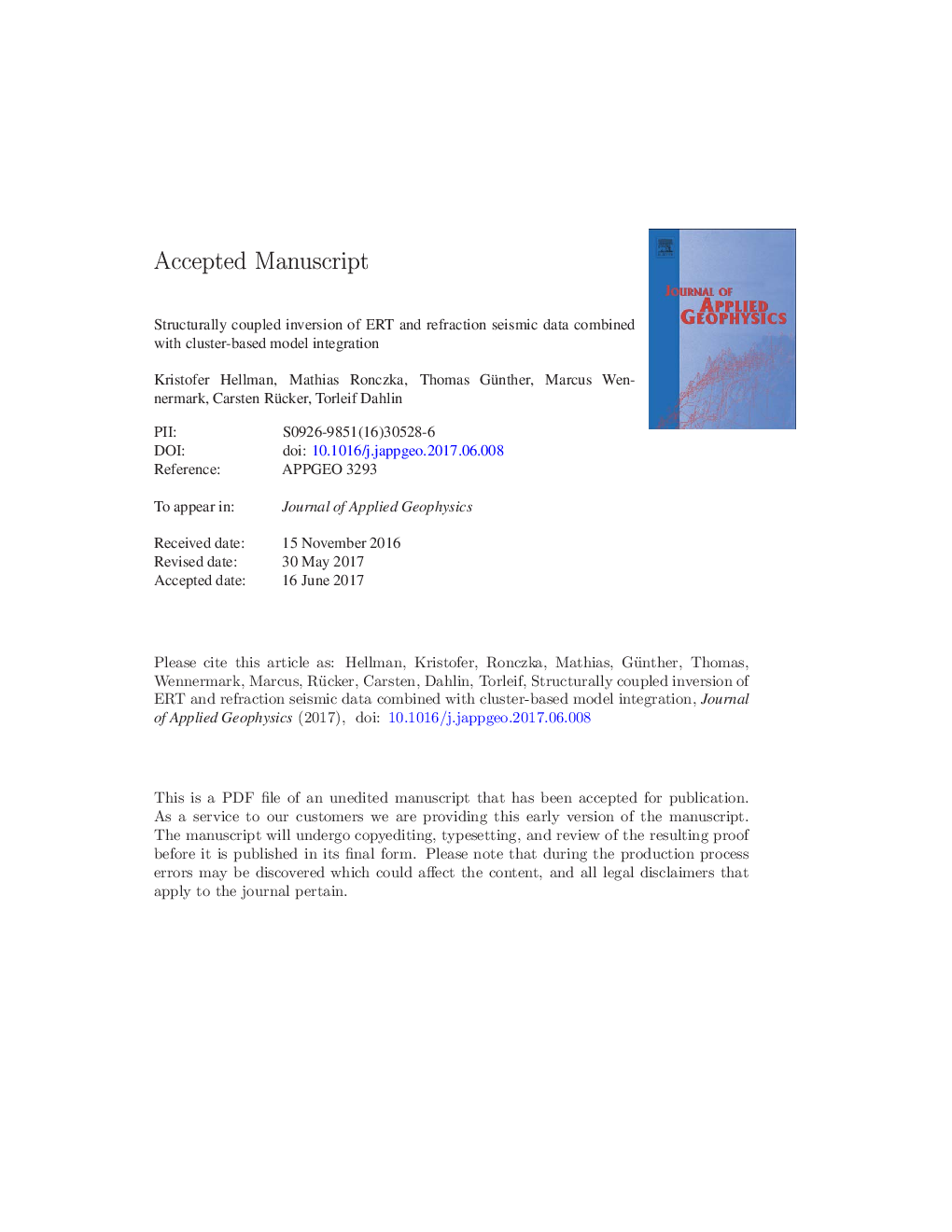| Article ID | Journal | Published Year | Pages | File Type |
|---|---|---|---|---|
| 5787133 | Journal of Applied Geophysics | 2017 | 28 Pages |
Abstract
Electrical resistivity tomography (ERT) and refraction seismics are among the most frequently used geophysical methods for site-investigations and the combined results can be very helpful to fill in the gaps between the point measurements made by traditional geotechnical methods such as Cone Penetration Test (CPT), core-drilling and geophysical borehole logging. The interpretation of the results from a geophysical investigation constituting a single method often yields ambiguous results. Hence, an approach utilizing multiple techniques is often necessary. To facilitate interpretation of such a combined dataset, we propose a more controlled and objective approach and present a method for a structurally coupled inversion of 2D electrical resistivity and refraction seismic data using unstructured meshes. Mean shift clustering is used to combine the two images and to compare the separate and coupled inversion methodologies. Two synthetic examples are used to demonstrate the method, and a field-data example is included as a proof of concept. In all cases a significant improvement by the coupling is visible. The methodology can be used as a tool for improved data interpretation and for obtaining a more comprehensive and complete picture of the subsurface by combining geophysical methods.
Related Topics
Physical Sciences and Engineering
Earth and Planetary Sciences
Geophysics
Authors
Kristofer Hellman, Mathias Ronczka, Thomas Günther, Marcus Wennermark, Carsten Rücker, Torleif Dahlin,
